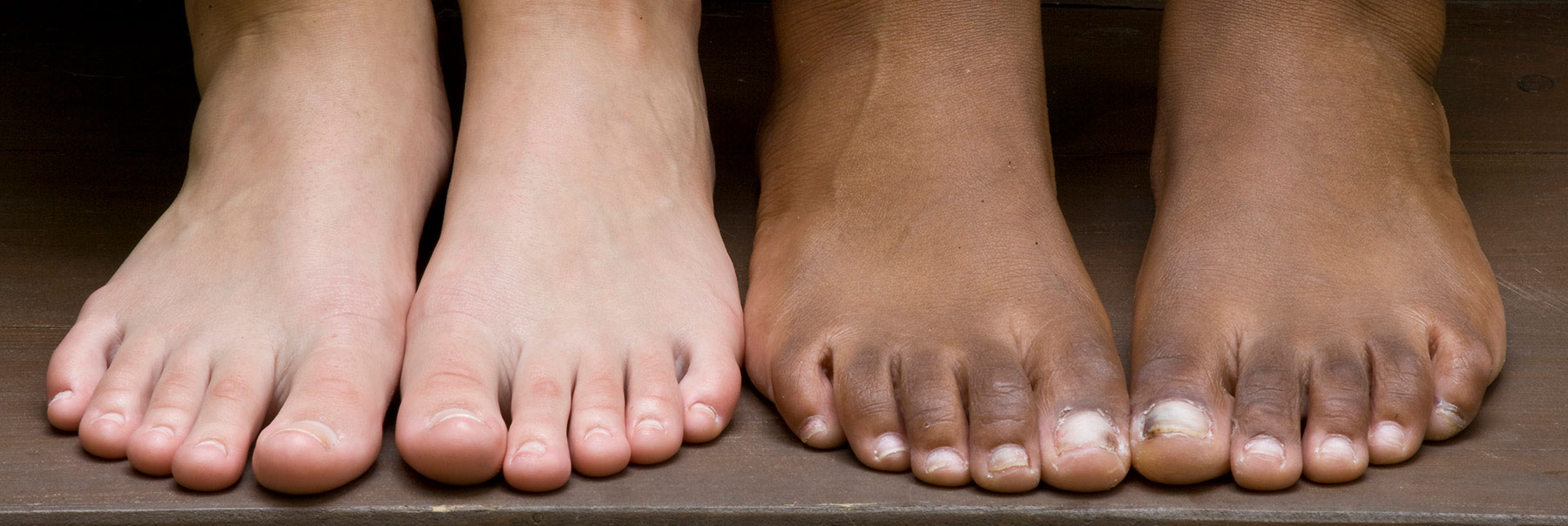Nail Cancer: Don’t Ignore the Signs

You may not pay much attention to the appearance of your nails.
Even if you regularly treat yourself to mani-pedis, what’s hidden beneath the polish may be threatening your health.
Different types of nail disorders and tumors vary in appearance and size.
Some nail problems are cancerous, and others are just ugly and irritating.
People with darker skin are particularly vulnerable to nail tumors’ risks because discolorations on or under the nail may be considered normal and go ignored.
“Many of my patients of color are surprised to learn that skin cancer can occur in the nail and may appear as a brown or black streak that runs the length of the nail,” says Brian Morrison, M.D., a dermatologist with Sylvester Comprehensive Cancer Center.
This might sound like an aesthetic concern, but the metastasis of a cancerous tumor can be fatal.
This is what killed Bob Marley. He had a subungal (beneath the nail plate) melanoma on his toe.
Dr. Brian Morrison
“While persons of color are not necessarily more likely to get nail tumors, they are less likely to seek out routine dermatological care for skin cancer screenings, including the evaluation of all 20 nails,” he says.
What to look for when examining your nail bed.
Malignant (cancerous) and benign (non-cancerous) growths can look similar. For an accurate diagnosis and treatment, you need a dermatological exam and, potentially, a biopsy.
The most serious nail tumor, melanoma, may look like a brown, black, or grey line or streak on or underneath the nail. The nail may split or appear flaky and scaly. The texture of the nail might be thin, uneven, or ridged. Bumps may form under or around the nail.
When multiple nails are involved, the condition is less likely to be cancerous.
Dr. Morrison, along with Sylvester’s team of dermatological oncologists, treat malignant nail tumors, such as:
- melanoma
- squamous cell carcinoma (or Bowen’s disease)
- onychocytic carcinoma
Common benign (non-cancerous) nail tumors include:
- onychopapilloma
- nevus (moles)
- lentigo
- onychomatricoma
- glomus tumor
Are these tumors contagious to others?
No. But squamous cell carcinoma of the nail has been linked with human papillomavirus (HPV), which is infectious and can cause warts. “It is possible that getting the HPV vaccine could help protect against this type of cancerous tumor,” says Dr. Morrison. “More research will need to be done in this area to confirm any true benefit.”
What is the treatment for nail tumors?
“The recommended treatment for malignant nail tumors is surgical excision of the lesion,” Dr. Morrison says. “Non-malignant tumors do not always require surgical removal unless they are painful or otherwise symptomatic.”
“The outcome for patients depends on where the tumor is and how aggressively it’s treated,” he says. “Excision of the complete nail matrix (the cells that make up the hard part of the nail) may result in permanent nail dystrophy (like a split nail). When a tumor involves only the distal matrix (the cells that make up the underside of the nail), a biopsy or surgery is less likely to cause visible damage because it’s hidden beneath the remaining nail plate.”
Everyone, and especially people with dark skin, should be aware of changes in the appearance or texture of their nail beds. If you see something suspicious, don’t ignore it or assume it will resolve on its own. See a dermatologist for an exam and an appropriate course of treatment.
Dana Kantrowitz is a contributing writer for UMiami Health News.
Tags: Dr. Brian Morrison, nail tumors
